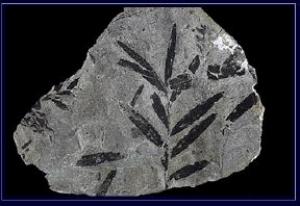Ancient biodiversity disappears: Is global warming a cause?
Scientists have found very impressive evidence of the sudden disappearance of ancient plant diversity. The fossil tree leaves 200 million years ago found in East Greenland bring a timeless message to modern people.
The results of this study were published in the journal Science (USA).
The researchers were surprised to find that only a small increase in CO2 emissions could cause a loss of some plant species. CO2 itself also causes global warming.
Global warming has long been seen as the culprit causing extinction. However, contrary to the previous view, the current researchers argue that not needing an excessive amount of CO2 in the atmosphere is enough to push the ecosystem to the limit of survival.
H. Richard Lane, program director for the US National Science Foundation (NSF), the Earth Science Division, a part of the research, said: 'Unexpected discoveries of climate history the earth shook the foundation of knowledge and understanding of climate change today. '
Jennifer Mcelwain from Dublin University, the lead author of this study, notes that SO2 emissions from volcanic eruptions can also contribute significantly to pushing plants to the extinction side.
 Behind fossilized leaves is the disappearance of biodiversity. This may have a similar version in the future. (Photo: Jennifer C. McElwain, Dublin University)
Behind fossilized leaves is the disappearance of biodiversity. This may have a similar version in the future. (Photo: Jennifer C. McElwain, Dublin University)
McElwain added: 'Currently, we have no way to detect current SO2 changes compared to the past, so it is difficult to assess whether SO2 is involved with CO2 in influence. to this extinction or not. '
This study focuses on the period between the Triassic and Jurassic period, which is thought to mark the extinction of many plant and animal species.
Until before this study, people still thought that extinction took place slowly, spanning millions of years.
Previously, the use of fossils to determine in detail about extinction rates was extremely difficult. Fossils only provide a snapshot or a glimpse of the creatures that existed in the past.
Scientist Peter Wagner of the US National Museum of Natural Science in Washington DC has developed a technique that allows to detect the earliest signs of decline in ancient ecosystems, before plants start to get better. strains .
This method gives early warning signs that whether the ecosystem is in danger.
Wagner said: 'Digging 20 meters deep at the East Greenland cliff, the fossils obtained show differences in species diversity as estimated. But at the last 10 meters depth, species diversity has fallen so low that it is beyond the limits of natural error. Ecosystems are less and less supportive for species survival. '
It is estimated that, by 2100, the level of CO2 in the atmosphere may increase 2.5 times compared to the current level . McElwain said : 'Of course this is the worst scenario. However, it is at this threshold (900 ‰) that the destruction of the ancient ecosystem has actually taken place. '
'Pay attention to the early warning signs of destruction in modern ecosystems. The lesson from the past shows that high extinction levels - up to 80% - can happen very suddenly. However, they are often heralded by ecological changes for a long time. '
In terms of climate change, most modern ecosystems have not reached the danger threshold. However, many of them have entered a period of lasting ecological change.
'Early warning signs of destruction show a visible scene.' McElwain said. 'The biggest threat to the current level of biodiversity is the change in land use such as deforestation. But even just a relatively small change in the amount of CO2 and the temperature of the earth can have unintended consequences for the ecosystem. '
This study involved a collaboration of McElwain, Wagner and Stephen Hesselbo from Oxford University, England.
Refer:
Fossil Plant Relative Abundances Indicate Sudden Loss of Late Triassic Biodiversity in East Greenland.Science, June 18, 2009
- The temperature of the Earth increases, making the marine ecosystem strong
- Global warming delays the next ice age
- Global warming can erase the Olympics since 2085
- Video: 135 years of global warming summed up for more than 30 seconds
- Scotland faces 'apocalypse' because of global warming
- The reason for the worsening winter is despite the global warming climate
- Cover the sun to block ... global warming
- Where will the sea level be highest due to global warming?
- Nature helps curb the global warming
- Global warming threatens the safety of flights
- Global warming has terrible consequences
- Two Vietnamese granaries will be submerged in the sea after 5 years?
 The most famous scientific failures in history
The most famous scientific failures in history Mysterious genius mechanic and the machine froze time
Mysterious genius mechanic and the machine froze time The son carries the 'bad gene' of genius Albert Einstein
The son carries the 'bad gene' of genius Albert Einstein Isaac Newton
Isaac Newton